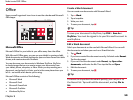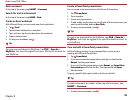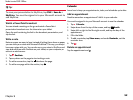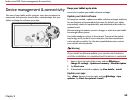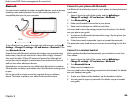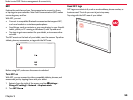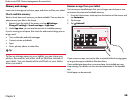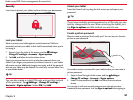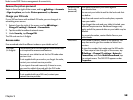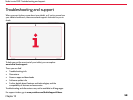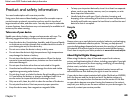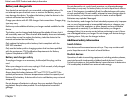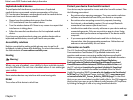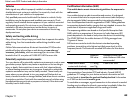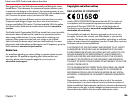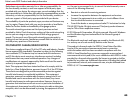
Nokia Lumia 2520: Product and safety information
63
Chapter 11
Vehicles
Radiosignalsmayaectimproperlyinstalledorinadequately
shielded electronic systems in vehicles. For more info, check with the
manufacturer of your vehicle or its equipment.
Onlyqualiedpersonnelshouldinstallthedeviceinavehicle.Faulty
installation may be dangerous and invalidate your warranty. Check
regularly that all wireless device equipment in your vehicle is mounted
andoperatingproperly.Donotstoreorcarryammableorexplosive
materials in the same compartment as the device, its parts, or
accessories. Do not place your device or accessories in the air bag
deployment area.
Safety and texting while driving
Obey all local laws. Always keep your hands free to operate the vehicle
whiledriving.Yourrstconsiderationwhiledrivingshouldberoad
safety.
Cellular Telecommunications & Internet Association (CTIA) has also
published further info and tips on safe driving at www.ctia.org/
consumer_info/safety, which we encourage you to review. Users
locatedintheU.S.mayalsocall1-888-901-SAFEformoreinfo.
Potentially explosive environments
Turnyourdeviceoinpotentiallyexplosiveenvironments,suchasnear
gasstationpumps.Sparksmaycauseanexplosionorreresultingin
injury or death. Note restrictions in areas with fuel; chemical plants;
or where blasting operations are in progress. Areas with a potentially
explosive environment may not be clearly marked. These usually are
areaswhereyouareadvisedtoturnyourengineo,belowdeckon
boats, chemical transfer or storage facilities, and where the air contains
chemicals or particles. Check with the manufacturers of vehicles using
liqueedpetroleumgas(suchaspropaneorbutane)ifthisdevicecan
be safely used in their vicinity.
Certication information (SAR)
This mobile device meets international guidelines for exposure to
radio waves.
Your mobile device is a radio transmitter and receiver. It is designed
not to exceed the limits for exposure to radio waves (radio frequency
electromagneticelds),recommendedbyinternationalguidelines
fromtheindependentscienticorganizationICNIRP.Theseguidelines
incorporate substantial safety margins that are intended to assure the
protection of all persons regardless of age and health.
TheexposureguidelinesarebasedontheSpecicAbsorptionRate
(SAR), which is an expression of the amount of radio frequency (RF)
power deposited in the head or body when the device is transmitting.
TheICNIRPSARlimitformobiledevicesis2.0W/kgaveragedover
10gramsoftissue.
SAR tests are carried out with the device in standard operating
positions,transmittingatitshighestcertiedpowerlevel,inallits
frequency bands. The maximum recorded SAR values for this device
are:
Maximum
SAR value
Frequency bands used
when Maximum SAR value
was recorded
When used in direct
contact with the body
1.77W/kg
over 10g
3-slot GPRS 1800
Your mobile device is also designed to meet the United States Federal
Communications Commission (FCC) and Industry Canada SAR (IC)
guidelines. FCC ratings for your device and more information on SAR
can be found at transition.fcc.gov/oet/rfsafety/sar.html. Information
on IC SAR can be found at www.ic.gc.ca.
To send data or messages, a good connection to the network is needed.
Sending may be delayed until such a connection is available. Follow the
separationdistanceinstructionsuntilthesendingisnished.



